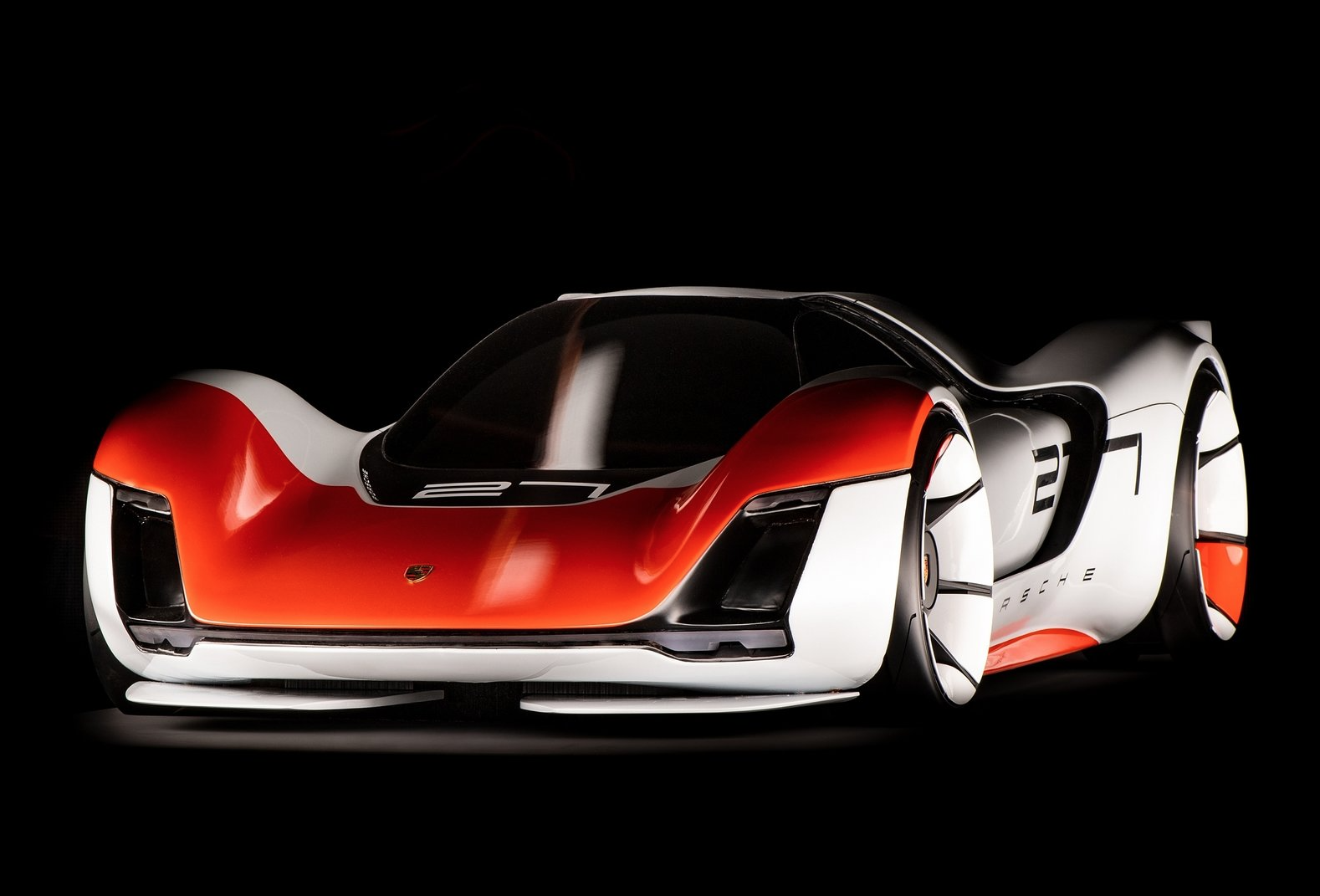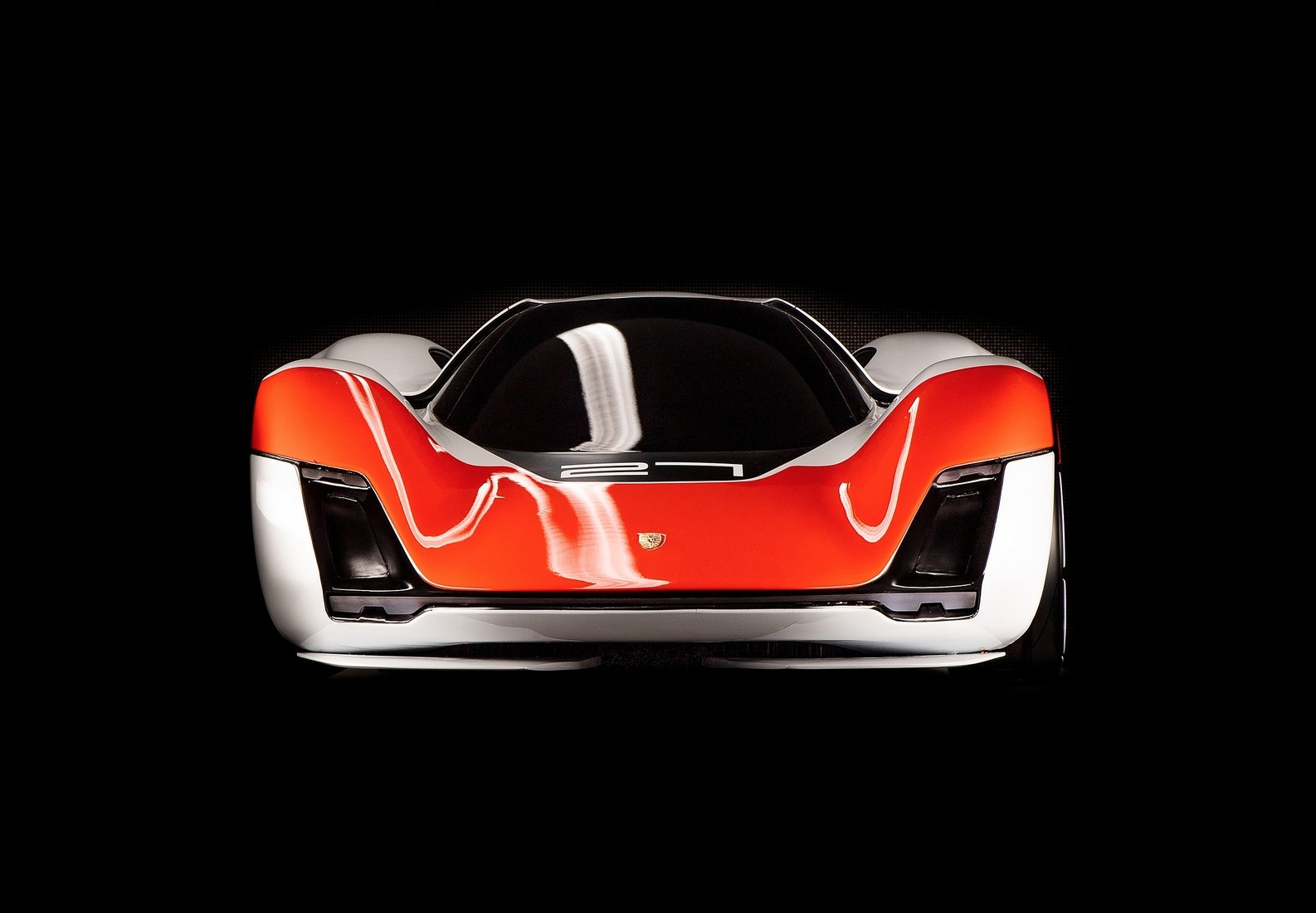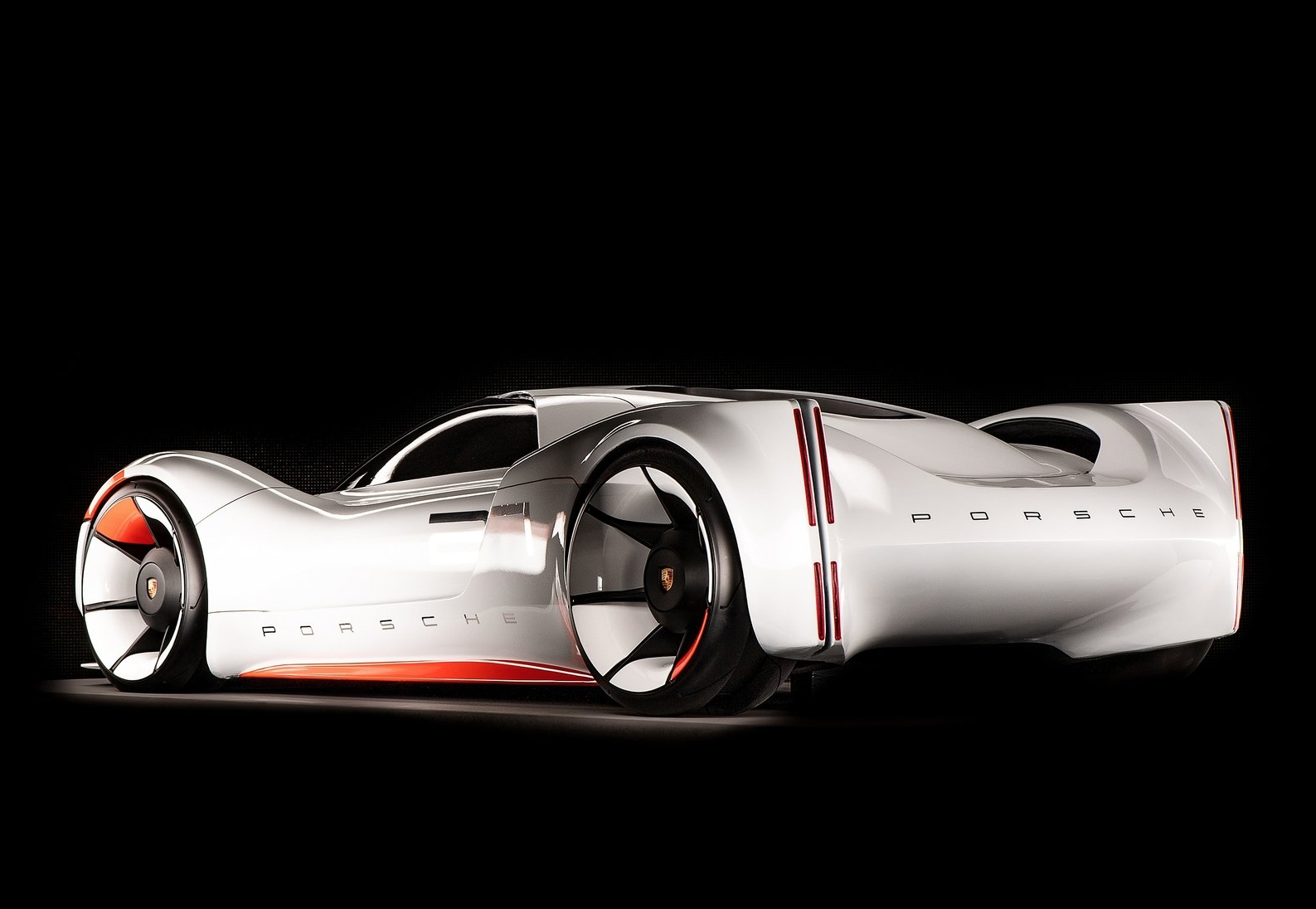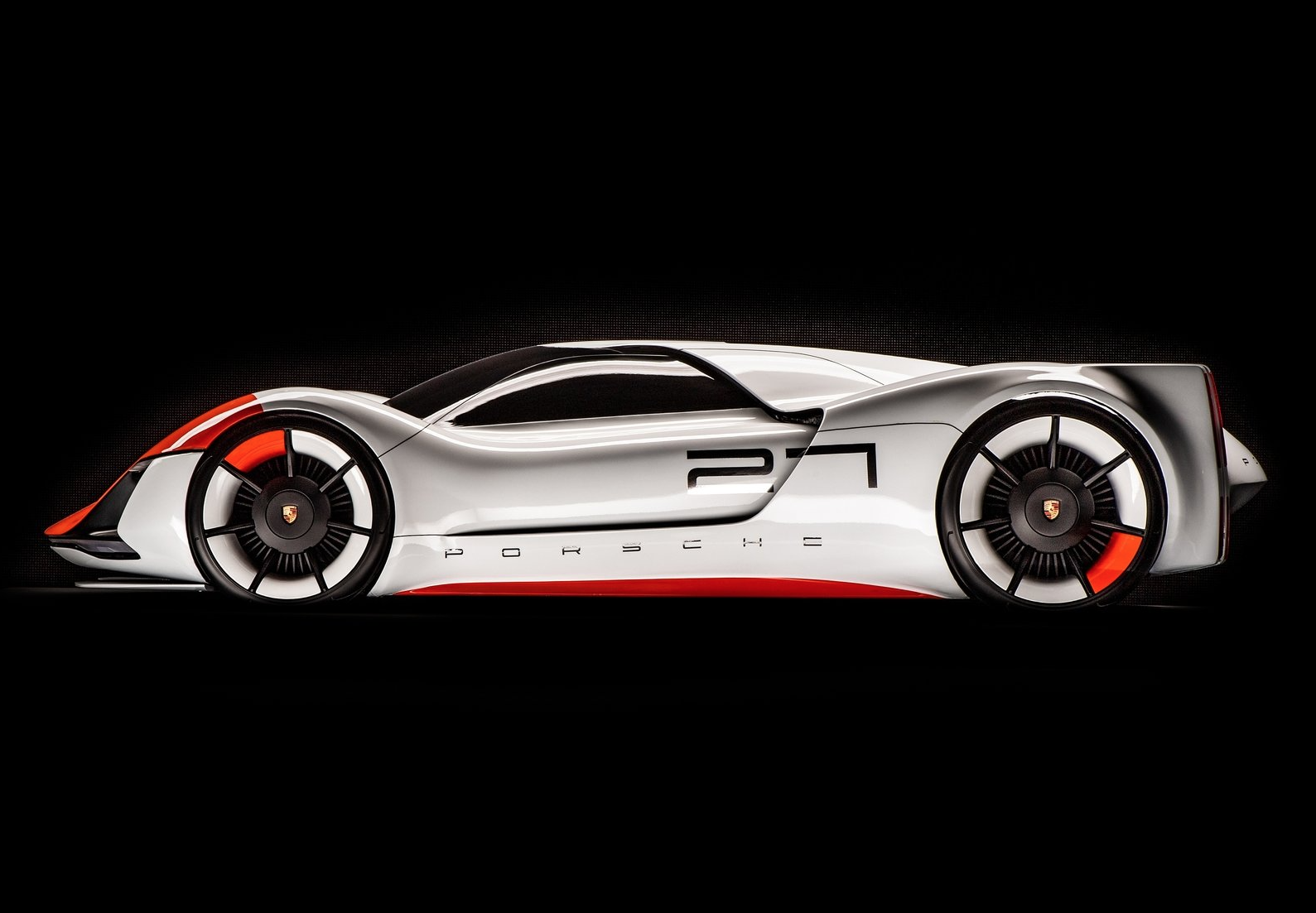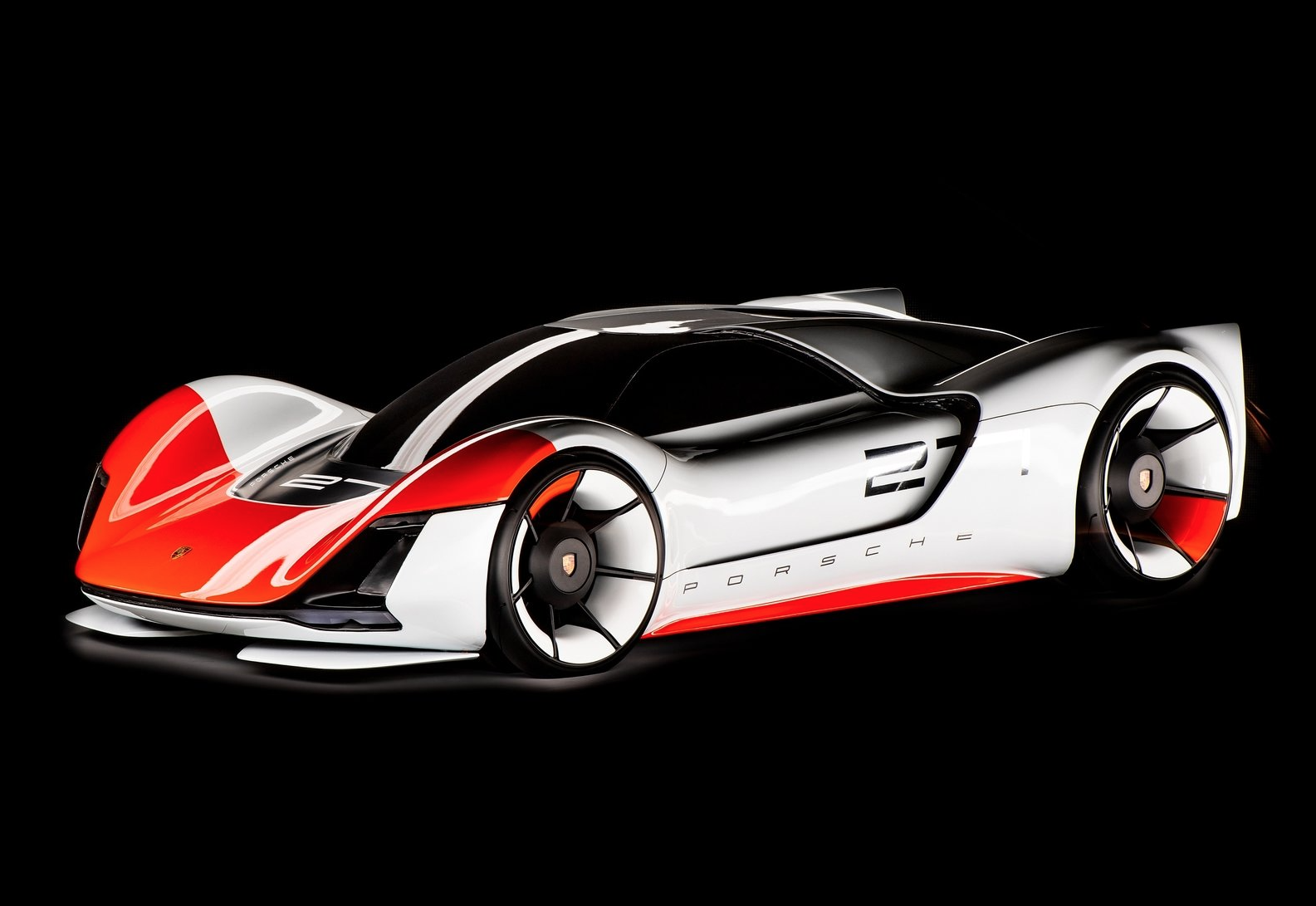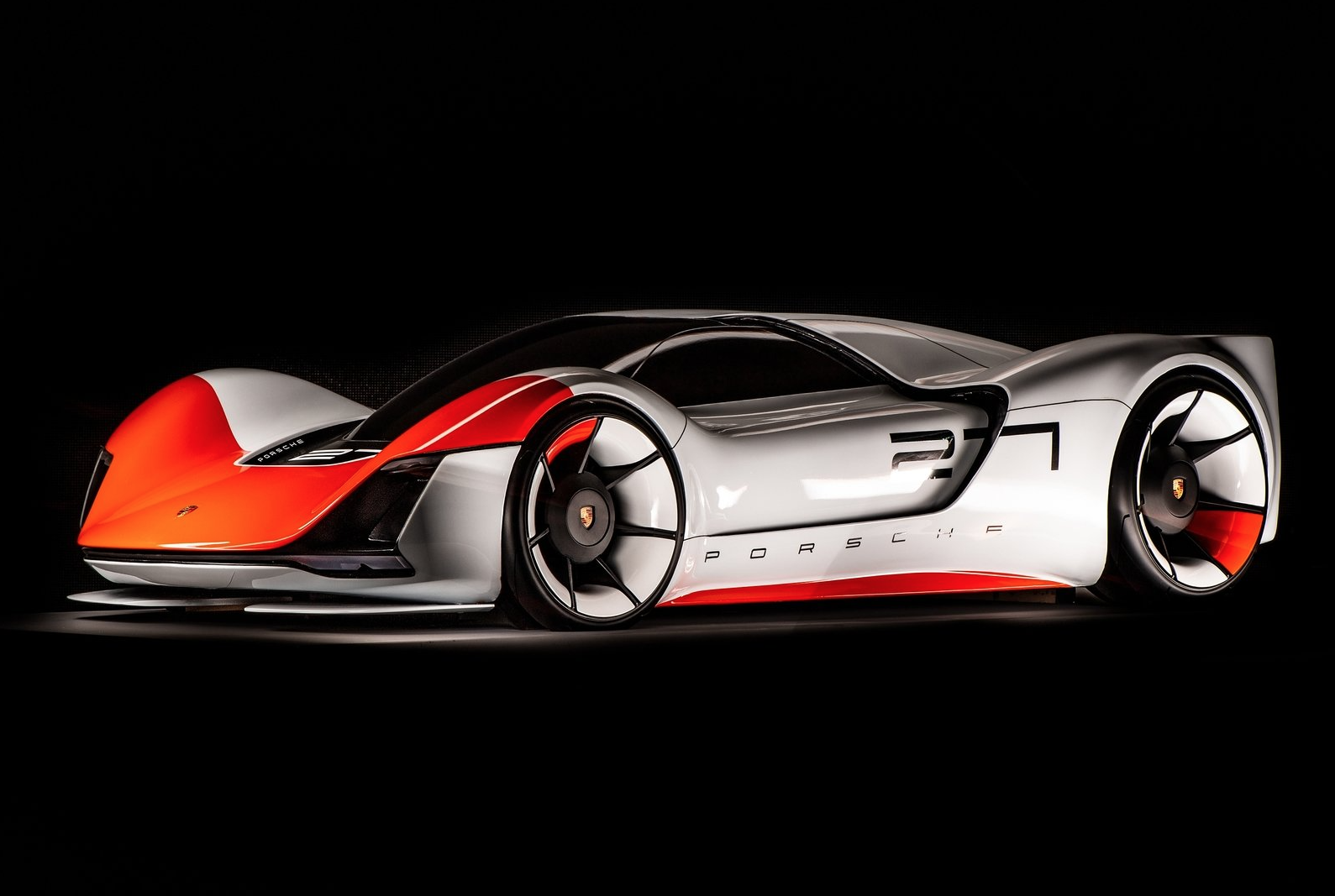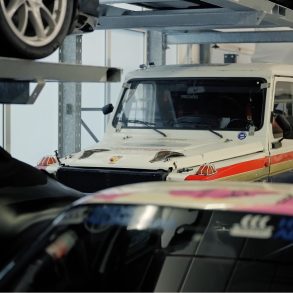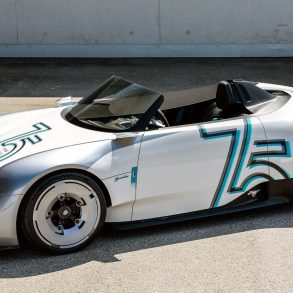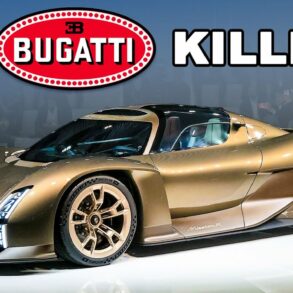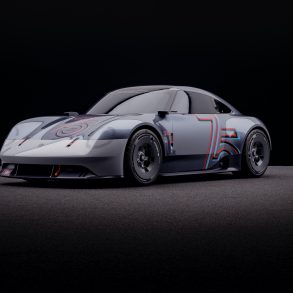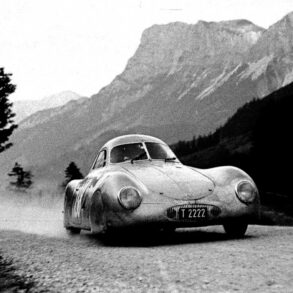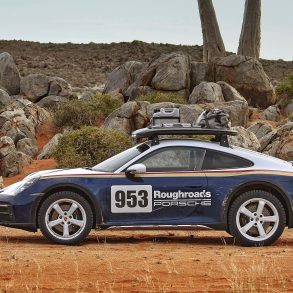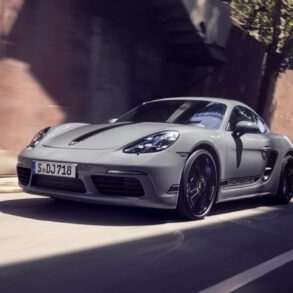Porsche 906 Living Legend (2015)
In this vision of a super sports car, the Porsche 906 (2015; 1:1 hard model) provided the proportions and design cues. Particularly innovative is the visual impression of the car being two bodies pushed into each other. The gap between the elements serves as a ventilation duct for a powerful mid-engine.
The 906 Living Legend was intended to be a ‘super sports car’; the road-legal vehicle features a mid-engine design and massive air vents for cooling. The car’s shape is undeniably fluid, with the front and back end establishing a particularly effective gradient. The 906 Living Legend’s design includes subtle, longitudinal strip brake lights.
The Porsche 906 Living Legend is a racing-inspired supercar concept, designed and built by Porsche in 2015, designed with the intent to pay hommage to the original Porsche 906. The 906 Living Legend essentially was a design study meant to preview future electric cars like the Porsche Taycan, and some of its design elements like the wheels and the style of the headlights did end up into the concept that previewed the Taycan, the Porsche Mission E. The company said that the likely powertrain for the 906 Living Legend would have been 4 electric motors powering each wheel.
Porsche Notes
Even if the design team develops the automobiles of the future in its free design projects, the brand history of Porsche is always still present as a source of inspiration. So it was that the Porsche 906 served as the model for the proportions and body design for this vision of a super sports car. This is shown, for example, by the red contrasting bonnet of its front end and by the layout of its headlights, which immediately bring to mind the legendary old racing car and its unforgettable outing in the 1966 Targa Florio. At the same time, the study plays with the possibilities of creating a stylistic association between light sources and air intakes.
“The design process for such visions is very free,” explains Michael Mauer. “It is not necessary to keep to pre-defined product identity characteristics. For example, the headlights were positioned in an air intake as a futuristic light source. When we were later developing an identity for our electric models, we took another look at these designs. The radical idea of simply integrating a light source in an opening instead of a glass cover seemed appropriate for us. We are now approaching this ideal.”
Another innovative idea was realising the body of the Porsche 906 Living Legend as two parts inserted in each other – with the gap between the elements as a ventilation duct for powerful engine mounted amidships. This is a key design feature for Michael Mauer. “Modern hypercars are greatly dependent on their aerodynamics and openings resulting from the enormous ventilation requirements.” At the rear, two steeply projecting vertical fins with red light strips ensure a dramatic look from the back too.
